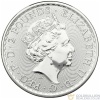Gold bullion, particularly in the form of 1oz gold coins, holds a significant place in the investment market. As investors seek to diversify their portfolios and safeguard their wealth, the allure of gold as a tangible and valuable asset remains steadfast. In this article, we explore the various aspects of purchasing, storing, and investing in 1oz gold bullion, shedding light on its historical significance and its role in modern investment strategies.
Key Takeaways
- Gold bullion, especially 1oz coins, is a tangible and valuable asset with historical significance.
- Investing in 1oz gold coins offers a means of diversifying investment portfolios and hedging against inflation.
- When purchasing 1oz gold bullion, it is crucial to choose reputable dealers and understand pricing premiums.
- Storing and protecting 1oz gold coins requires careful consideration, including home storage solutions and insurance options.
- Legal and tax considerations for 1oz gold bullion include reporting requirements, tax implications, and regulatory compliance.
Understanding Gold Bullion

Definition and Significance
Gold bullion, defined as uncoined gold or silver in bars or ingots, is a tangible asset that has been synonymous with wealth throughout history. Its allure has captivated societies, from prospectors to monarchs, and has given rise to bullionism—the belief in the power of precious metals to bolster trade and monetary income.
The significance of gold bullion is not only rooted in its historical legacy but also in its modern-day applications. It serves as a cornerstone for investors seeking a stable store of value, especially in the form of 1oz Gold Bullion Coins. These coins represent a blend of tradition and investment appeal, offering a unique combination of portability, beauty, and value retention.
Tip: When considering gold bullion investment, remember its dual role as both a cultural icon and a financial asset. This duality enhances its significance in a diversified investment portfolio.
The History of Gold as a Valuable Asset
Gold has long been associated with wealth and has been present in culture since the beginning of time. After all, it was the lure of gold that drew prospectors willing to travel the world in search of ore deposits. Gold was also one of the three kings’ gifts to the baby Jesus, as well as a royal power symbol. As a result, bullionism emerged as a natural result of appreciating the role of gold in human life – supporters of the trend believed that owning precious metals facilitated trade development and increased monetary income.
The beginning of the development of the gold investment market can be identified with the year 1967, when the first bullion coin in history, the South African Krugerrand – was issued. Investment coins, also referred to as gold bullion coins, stand out for a variety of reasons that draw more and more investors each year. Aside from investment benefits, aesthetic values are influencing the growing prices remaining consistently high. As a notoriously safe haven asset, it is not surprising that an increasing number of investors choose to invest their financial resources in physical gold, specifically gold bullion coins.
Voltaire once stated that:
Paper money eventually returns to its true value—zero
Given the increasing number of turbulences in financial markets, people often wonder how can we protect our capital from inflation, the effects of various types of financial crises, and other factors that cause our money to lose its value? One solution is to invest in gold bullion coins.
1oz gold bullion coins are one the most sought after product in the world of bullion. The term gold bullion coins comes from the French word “bouillon” meaning boiling. The term refers to the early stages of mercantilism in Europe around the turn of the 15th and 16th centuries. Gold has long been associated with wealth and has been present in culture since the beginning of time. After all, it was the lure of gold that drew on the market value of precious metals. As such, investments in Bullion involve a degree of risk, which may make them unsuitable for certain persons. Before making any investment decision, you may wish to seek advice from your financial, legal, tax and accounting advisers. You should carefully consider the risks associated with investing in Bullion, taking into account your own individual financial needs and circumstances. Investments in Bullion should only be made as part of a diversified investment portfolio and investment advice should be sought before any investment is made. The historic
Types of Gold Bullion Products
Gold bullion products come in various forms, each with its own characteristics and benefits. The most common types are coins and bars, which are favoured for their liquidity and ease of storage. Coins are often produced by government mints and carry legal tender status, making them a popular choice for investors. Examples include the Gold Krugerrand, Gold Maple Leaf, and Gold Eagle coins. On the other hand, bars offer a more cost-effective way to invest in gold due to their lower premiums over the spot price of gold. They range from small 1 gramme bars suitable for novice investors to large 400 oz bars used by institutional buyers.
When considering gold bullion products, it’s important to understand the differences in purity, weight, and brand. Renowned mints like The Royal Mint, Metalor, and PAMP produce bars that are widely recognised and trusted in the market. Here’s a quick overview of common gold bar weights available:
- 1 Ounce Gold Bars
- 100 Gramme Gold Bars
- 50 Gramme Gold Bars
- 10 Gramme Gold Bars
Tip: Always verify the authenticity and purity of gold bullion products before making a purchase to ensure you’re getting the true value for your investment.
Investing in Gold Bullion

Reasons to Invest in Gold
Investing in gold bullion provides a secure and stable option for diversifying your investment portfolio. With its long-standing reputation as a safe haven asset, gold offers protection against economic downturns and inflation. Additionally, gold bullion coins and bars are internationally recognised and can be easily traded, making them a highly liquid investment. Consider the following factors when investing in gold bullion:
- Liquidity: Gold bullion is highly liquid and can be easily bought and sold in the global market.
- Diversification: Gold bullion offers a way to diversify your investment portfolio and hedge against market fluctuations.
- Inflation Hedge: Gold bullion serves as an effective hedge against inflation, preserving the value of your investment over time.
Tip: When investing in gold bullion, consider the liquidity, diversification benefits, and inflation-hedging properties to make informed investment decisions.
Gold Bullion vs Other Investment Options
When comparing gold bullion to other investment options, it’s essential to consider the unique characteristics that make it a distinct asset class. Unlike stocks or bonds, gold bullion offers a tangible asset that can be held and stored. Its value is not directly tied to the performance of a company or government, making it less susceptible to market volatility.
Investing in gold bullion can be seen as a long-term store of value, particularly during times of economic uncertainty. Here are some key points to consider:
- Gold is historically a safe haven during financial turmoil.
- It is a physical asset that can act as a hedge against inflation.
- Gold’s value is universally recognised, providing liquidity in various market conditions.
Tip: Diversification is crucial in any investment portfolio. Including gold bullion can help balance risks associated with more volatile investments.
It’s important to acknowledge that gold bullion, like any investment, carries its own set of risks and should be approached with due diligence. Prospective investors should seek advice from financial experts and consider their individual financial needs before committing to gold as part of a diversified portfolio.
How to Assess Gold Bullion Prices
Assessing the price of gold bullion involves understanding both the spot price and the premiums charged over this price. The spot price is the current market price at which gold can be bought or sold for immediate delivery. It fluctuates continuously due to market forces and is influenced by factors such as currency values, supply and demand, and geopolitical events.
When considering the purchase of 1oz gold bullion, it’s important to compare the spot price with the price offered by dealers. Premiums over the spot price can vary depending on the product’s rarity, demand, and the dealer’s markup. Here is a simple list to help you evaluate gold bullion prices:
- Check the live spot price of gold, which is updated regularly.
- Compare dealer prices to the spot price to determine the premium.
- Consider the product’s condition; marks or edge knocks may affect value.
- Review historical price trends for context on current pricing.
Tip: Always verify the spot price from a reliable source before making a purchase to ensure you are getting a fair deal.
Remember, the value of gold bullion is not only in its weight but also in its purity and the trustworthiness of its source. Investing in gold from reputable dealers who offer transparent pricing aligned with market rates is crucial for a sound investment.
Purchasing 1oz Gold Bullion

Choosing the Right Dealer
When choosing a dealer for your 1oz gold bullion, it is crucial to ensure that the products are from reputable mints and dealers. Look for LBMA accredited refineries, which guarantee the highest quality and global recognition. Additionally, consider the following factors:
- Smooth, Secure Delivery: Ensure that every delivery is fully insured with a 100% money back guarantee to provide total confidence.
- Expert Information: Access to friendly specialists who can help you achieve the best results.
- Ongoing Support: Stay updated with the gold’s growth and important market movements.
For further assurance, consider reading customer testimonials and reviews to gauge the dealer’s service levels and reliability. Always prioritise reputable dealers with a proven track record of customer satisfaction and quality assurance.
Understanding Premiums and Pricing
When purchasing 1oz Gold Bullion, it’s important to consider the premiums and pricing associated with the product. The premiums are based on the live precious metal price and are applied to the premium above the precious metal price only and not on the metal price itself. It’s worth noting that these bullion items are bought and sold on low premiums over their precious metal content and not solely for aesthetic purposes. Some products may have edge knocks and/or marks, but these do not alter the specifications of the coins. Additionally, it’s important to be aware of the costs of insurance, which are applied to the premium above the precious metal price only. If you require any assistance, please do not hesitate to call the showroom on +441253343081 and one of our team can discuss your purchase.
The Process of Buying Gold Bullion
The journey to owning 1oz gold bullion is straightforward and can be summarised in a few key steps. Firstly, research is paramount; familiarise yourself with the market and identify reputable dealers. Once you’ve selected a dealer, you can usually make a purchase online or over the phone. Online platforms often provide a secure checkout process, allowing you to complete your transaction swiftly and safely. If you prefer a more personal touch, phoning a dealer can offer the added benefit of expert advice and answers to any immediate questions.
After deciding on the product and completing the purchase, you’ll need to consider delivery and storage options. Many dealers offer secure shipping directly to your home or a storage facility. Some may even allow you to defer delivery to a later date, which can be beneficial if you’re still arranging your storage solution. It’s important to understand the fees associated with storage, as these can vary significantly between providers.
Finally, ensure you are fully aware of the terms and conditions of your purchase, including any return policies or guarantees. This knowledge will give you peace of mind and ensure that your investment is protected. Remember, investing in gold is not just a transaction, but the beginning of a long-term asset management strategy.
Storing and Protecting Your Gold

Home Storage Solutions
For many investors, the appeal of gold bullion lies in the ability to physically possess their wealth. Home storage solutions offer the convenience of immediate access and personal control over one’s assets. However, it is crucial to ensure that your gold is stored securely to prevent theft or damage.
When creating a home vault, consider factors such as the vault’s location, its resistance to fire and water, and the complexity of its locking mechanism. It’s advisable to invest in a high-quality safe that is both difficult to remove and break into. Discretion is key; avoid drawing attention to the location of your gold.
Tip: Regularly check the condition of your stored gold and the security of your storage solution to maintain peace of mind.
If opting for a home storage solution, it’s also worth considering insurance options to protect your investment against potential risks. Speak with your insurance provider to understand the coverage available for precious metals stored at home.
Safety Deposit Boxes and Vault Storage
For investors who seek a higher level of security for their precious metals, safety deposit boxes and vault storage offer robust solutions. These options provide protection against theft, damage, and environmental hazards, ensuring that your investment remains secure.
-
Safety deposit boxes are available at banks and private security firms, offering a secure and private space for your gold bullion. They are typically located in highly secure areas with restricted access, giving you peace of mind.
-
Vault storage services are offered by specialist providers who can guarantee the safety of your assets. These facilities are often equipped with advanced security systems, including 24/7 monitoring, biometric access controls, and seismic and fire protection.
When considering these storage options, it’s important to assess the associated costs, accessibility, and insurance coverage. Here’s a brief overview:
-
Cost: Vault storage may come with higher fees than safety deposit boxes due to the additional security measures and services provided.
-
Accessibility: Some vault services offer online access to view your holdings, while safety deposit boxes require physical visits.
-
Insurance: Verify that your gold is insured while in storage; some providers include insurance in their fees, while others require a separate policy.
Tip: Always choose a storage option that aligns with your need for security, accessibility, and budget. Consider the long-term implications of your choice on the liquidity and overall management of your gold investments.
Insurance for Gold Bullion
When it comes to safeguarding your gold bullion, insurance plays a crucial role in providing financial protection. It’s important to ensure that your gold bullion is fully insured to safeguard your investment against unforeseen events. Additionally, considering the costs of insurance is essential, as it can impact the overall investment. For every £1500, a £1 fee is applied to cover the increasing costs of insurance. If you require any assistance, please do not hesitate to call the showroom on +441253343081 and one of our team can discuss your purchase.
Customer Reviews
Popular Products
2024 Britannia 1 oz Silver Bullion Coin
2024 Gold Bullion Sovereign Coin
2023 Coronation Gold Bullion Sovereign Coin
Gold Sovereign Best Value Coin – Secondary Market
2024 Britannia 1 oz Gold Bullion Coin
Gold 1 oz
The Role of Gold in Diversifying Portfolios

Gold’s Behaviour in Market Fluctuations
Gold has a well-documented history of stability during market fluctuations, often serving as a safe haven for investors. When stock markets are volatile, gold prices tend to rise as investors seek security. Conversely, during periods of economic stability and growth, gold may not perform as strongly, as riskier assets become more attractive.
Historical data illustrates this inverse relationship between gold and market stability. For example:
- 2008: UK recession = gold up by 43.2%
- 2011: Sovereign debt crisis in Europe = gold up by 10.5%
- 2016: Brexit vote and Trump’s election = gold up by 30.2%
- 2020: Covid pandemic = gold up by 20.9%
These figures highlight gold’s resilience in the face of economic adversity. It’s important for investors to understand that while gold can be a stabilising force, it is not immune to price fluctuations. Strategic allocation of gold in a portfolio can help mitigate risks associated with market volatility.
Tip: Diversifying with gold can provide a buffer against market downturns, but should be balanced with other investments to optimise returns.
Allocating Gold in an Investment Portfolio
When considering the inclusion of gold in an investment portfolio, it’s essential to understand the role it plays in diversification. Gold’s unique characteristics as a store of value and a hedge against inflation make it an attractive option for investors looking to balance their portfolios. A common strategy is to allocate a certain percentage of one’s portfolio to gold, depending on individual risk tolerance and investment goals.
Asset allocation is not a one-size-fits-all approach, and the same applies to gold. For instance, a younger investor might opt for a smaller percentage of gold holdings, seeking higher growth from more volatile assets. Conversely, as one approaches retirement, increasing the proportion of gold can provide a more stable foundation. The ‘age in bonds‘ rule, where one subtracts their age from 100 to determine the percentage of their portfolio that should be in growth assets, can be adapted for gold investments.
Tip: Consider reviewing your gold allocation periodically, especially as you reach different life stages or when there are significant market changes.
Here is a simplified example of how gold allocation might vary by age:
- Age 30: 10% in gold, 90% in growth assets
- Age 50: 20% in gold, 80% in growth assets
- Age 60: 30% in gold, 70% in growth assets
Remember, these figures are illustrative and should be tailored to your specific financial situation and objectives.
Gold and Inflation Hedging
In the face of inflation, investors have traditionally turned to gold as a means to preserve their purchasing power. The intrinsic value of gold often remains stable or even increases when currencies weaken, making it a popular choice for those looking to hedge against the erosive effects of inflation.
Historical data supports the notion that gold can be an effective hedge. For instance, during periods of high inflation, gold prices have tended to rise, reflecting its role as a store of value. However, it is important to note that gold’s performance is not solely tied to inflationary trends; geopolitical events, market uncertainty, and currency devaluations also play significant roles in its valuation.
Voltaire’s assertion that ‘Paper money eventually returns to its true value—zero’ is a stark reminder of the potential pitfalls of fiat currencies. In contrast, gold bullion, particularly in 1oz denominations, offers a tangible asset that can withstand the test of time.
Tip: Diversifying your portfolio with gold bullion can provide a buffer against inflation, but it should be balanced with other investments to manage risk effectively.
While gold is not a guaranteed safeguard, it has a historical precedent as a protective asset during turbulent economic times. Investors considering gold as an inflation hedge should assess their individual risk tolerance and investment objectives before making any decisions.
Legal and Tax Considerations

Reporting Gold Investments
When it comes to reporting gold investments, it’s important to understand the legal and tax implications. Investors should be aware of the reporting requirements for gold investments, including any tax implications related to buying and selling gold. Additionally, regulatory compliance for gold investors is a crucial aspect to consider, ensuring that all legal obligations are met. It’s essential to stay informed about the legal and tax considerations surrounding gold investments to make well-informed decisions.
Tax Implications of Buying and Selling Gold
The tax implications of buying and selling gold are an important aspect to consider for investors. It is crucial to understand the impact of Added Tax (VAT) and Capital Gains Tax (CGT) on gold investments. Additionally, storing bullion securely is essential to protect your investment. Here’s a brief overview of the tax implications:
- Added Tax (VAT): VAT may apply to gold bullion purchases, increasing the overall cost of acquisition.
- Capital Gains Tax (CGT): CGT is applicable when selling gold bullion, impacting the profits gained from the investment.
It’s advisable to consult with a financial advisor or tax professional to fully comprehend the tax implications and make informed investment decisions.
Regulatory Compliance for Gold Investors
When it comes to regulatory compliance for gold investors, it’s crucial to understand the legal and tax implications of buying and selling gold. Reporting gold investments and ensuring compliance with tax regulations are essential for investors. Additionally, it’s important to note that certain products, storage, and delivery services will be dependent on the type of account held. Bullion markets can be volatile, and the value of bullion may fluctuate depending on the market value of precious metals, making them unsuitable for certain persons. It’s advisable for investors to seek professional advice to navigate through the legal and tax considerations associated with gold investments.
For more detailed information, investors should consider consulting with a financial advisor or tax professional to ensure compliance with all legal and tax requirements. It’s also recommended to stay informed about the latest regulations and guidelines related to gold investments to make well-informed decisions.
In addition, investors should be aware of the risks involved in bullion investments and understand the authentication process to combat counterfeit products. This ensures the highest standards of purity and safeguards the investment.
Finally, it’s important for investors to consider the type of gold investment that aligns with their financial goals and risk tolerance. Whether it’s gold coins, gold bars, or other gold items, understanding the dynamics of physical gold versus other forms of investment is crucial for making informed investment decisions.
Conclusion
In conclusion, investing in 1oz gold bullion coins offers a secure and valuable opportunity for savvy investors. With a wide range of options from renowned mints and refineries, such as PAMP and Valcambi, investors can benefit from the security and historical significance of these coins. The consistently high value of gold, combined with the tangible asset of 1oz gold coins, makes them an ideal choice for those looking to diversify their investment portfolio. Whether it’s the British Britannia Gold Coin or the Royal Tudor Beasts collection, these coins merge pure artistry with a sound investment, providing a smooth and secure delivery of physical gold. As the gold investment market grows, it is crucial to choose products from reputable mints and dealers, and Tavex offers a selection of products from world-renowned mints with exceptional quality. With the LBMA accreditation ensuring the highest quality and global recognition, 1oz gold coins are a compelling investment option for those seeking stability and long-term value.
Frequently Asked Questions
What is the significance of 1oz gold bullion coins?
1oz gold bullion coins hold significant value as they are tangible assets with competitive prices. They are also recognised for their historical significance and are considered a safe haven asset by many investors.
How do I choose the right dealer for purchasing 1oz gold bullion?
When choosing a dealer, it is important to consider their reputation, accreditation, and the quality of the products they offer. Look for dealers who are partnered with renowned mints and have a track record of delivering high-quality gold bullion.
What are the key factors to consider when assessing gold bullion prices?
When assessing gold bullion prices, consider factors such as the current market value of gold, premiums, and any additional costs associated with storage, insurance, and delivery. It’s also important to compare prices from multiple dealers to ensure you are getting the best value for your investment.
How can I store and protect my 1oz gold bullion?
You can store your 1oz gold bullion in home storage solutions, safety deposit boxes, or vault storage. It is also advisable to obtain insurance for your gold bullion to protect it against theft, damage, or loss.
What are the legal and tax considerations when investing in 1oz gold bullion?
When investing in 1oz gold bullion, it is important to understand the reporting requirements for gold investments, the tax implications of buying and selling gold, and the regulatory compliance for gold investors. Seek advice from tax professionals or financial advisors to ensure compliance with relevant laws and regulations.
How does gold bullion contribute to diversifying investment portfolios?
Gold bullion plays a key role in diversifying investment portfolios as it behaves differently in market fluctuations compared to traditional assets. Allocating gold in an investment portfolio can provide a hedge against inflation and enhance overall portfolio stability.











